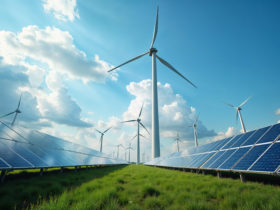Fashion retailers are expected to witness healthy sales in FY23 as discretionary spending rebounded and store operations normalised, according to rating agency ICRA. The rating agency said that the retailers in its sample will witness sales rise by 45% year-on-year in FY23.
However, ICRA said that the operating profit margins (OPMs) of the reatil industry are expected to remain range-bound at 7%-7.3%, due to significant increases in advertisement and promotion spending during the year. Nonetheless, the rating agency has a ‘Stable’ outlook on the fashion retail sector.
“The retail sector reported a robust 55% YoY revenue growth in 9M FY2023. While this was partly led by a low base, it also reflects a sharp 35% growth over the pre-pandemic period of 9M FY2020,” said Sakshi Suneja, Vice President & Sector Head, – Corporate Ratings, ICRA.
Store Expansion and Online Sales
Retailers resumed their store expansion plans in FY2022 and the expansion continued in FY2023 after a lull in FY2021. This was also enabled by the large equity raisings in FY2021, coupled with improved cash flows during FY2022 and YTD FY2023. Suneja said that entities in their sample set increased their capital spending to Rs. 14 billion in FY2023, implying a YoY expansion of 55%. She added 5 million sq. ft. of additional store space set up during FY2020-FY2022 helped sales in FY2023.
Further, retailers in the value-fashion segment continued with their capex plans in FY2023, however, ICRA expects some re-calibration in capex spending by these players in FY2024 until inflationary pressures ease.
Meanwhile, online sales also continued to grow, though at a slower pace, with the waning impact of the pandemic. ICRA expects the share of online sales to increase up to 12-14% of revenues by FY2024-25, compared to 8% in FY2022. This is, however, unlikely to replace the brickand-mortar sales model any time soon.
Financial Performance
Among various segments, the revenue growth was led by premium brands in the metros and Tier-I cities. In contrast, the value-fashion segment is facing inflationary headwinds and reported a negative same-store-sales growth compared with the pre-covid period of 9M FY2020, ICRA stated.
Although, the 55% revenue expansion achieved in 9M FY2023 factored in the seasonally strong Q3, revenue is likely to moderate in Q4, translating to an estimated 45% YoY revenue growth for the full fiscal 2023.
Besides, gross margins for the retailers in 9M FY2023 remained largely in line with the FY2022 levels, as the retailers passed on increased raw material costs, led by the increase in cotton prices, to end-consumers. Retailers also have other important cost heads such as rental, employee costs, and promotional expenses, which together account for about 30% of the total cost.
During FY2023, rental expenses reverted to pre-pandemic levels, but advertising and promotion expenses rose sharply as retailers resumed these spending after nearly two years. Consequently, despite strong growth in sales, operating profit margin(OPM) of fashion retailers is likely to remain range-bound at around 7-7.3% in FY2023, trailing the pre-pandemic OPM, ICRA said.
Moreover, credit profile of large, listed retailers is expected to remain adequately supported by strong balance sheets despite higher capex plans. The liquidity position of the retailers remain healthy as they have Rs. 2,200 crore of cash and liquid investment balances compared with a total debt of Rs. 2,400 crore, as on September 30, 2022. In addition, the retailers’ strong net worth after fundraising in 2021 through equity and improved cash flows would keep the credit metrics of entities in ICRA’s sample set comfortable. Also, the total debt-to-operating profit is expected to improve to below 1 time and interest cover to improve to 9 times in FY2023, from 1.4 times and 6.7 times, respectively, in FY2022.





